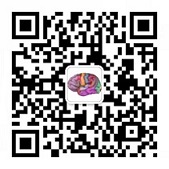Juvenile Myoclonic Epilepsy
Etiologies: considering that it is related to genetic factors (it may involve complex polygenic genetic patterns, some of which are related to gene variations such as CACNB4, GABRA1, CLCN2, GABRD, EFHC1, STX1B and CASR, and some chromosome microdeletions, such as 15q13.3 microdeletion syndrome can also be related), about 50% of them have a family history of epilepsy [1-5].
Age of onset: onset of seizures generally from age 8 to 25 years.
Seizure characteristics: It is mainly manifested as myoclonic seizure shortly after awakening (which can be manifested as electric shock like action of proximal or distal limbs dominated by upper limbs (sudden and rapid shaking). Sometimes it can be more obvious on one side, seizures can involve different parts of the body, it can involve the shoulder, but the lower limbs are rare. During the seizure, the children have clear consciousness, and sometimes it is manifested as sudden falling or unstable action of things in their hands, generally, there is no seizure during sleep (it needs to be distinguished from the physiological myoclonus during normal sleep), and insufficient sleep, emotional tension and flash stimulation are easy to induce). Most cases can have comprehensive tonic clonic seizures at the same time, and about 1/3 of patients can also have a small amount of absence seizures. 5-10% of patients have a history of febrile seizure [6-7].
EEG: Background: normal. Interictal: there may be generalized spike and slow wave (some may have focal abnormalities at the same time, but usually is not consistently seen in one area). Ictal: when myoclonic seizures occur, there may be generalized 3.5-5Hz (multiple) spike slow wave bursts (more than 25% can also be 2.5-3Hz) (it is very important to install the EMG at the same time.Sometimes it can be easily mistaken for an interictal discharge if an EMG is not installed or the video is not carefully watched). Some discharges and seizures have the characteristics of eye closure sensitivity, and some have photosensitive response, Hyperventilation tends to activate epileptiform discharges [6-7].
Brain MRI: Most of them are normal.
Developmental progress: Basically normal.
Reference
- Escayg, A., et al., Coding and noncoding variation of the human calcium-channel beta4-subunit gene CACNB4 in patients with idiopathic generalized epilepsy and episodic ataxia.Am J Hum Genet, 2000. 66(5): p. 1531-9.
- Cossette, P., et al., Mutation of GABRA1 in an autosomal dominant form of juvenile myoclonic epilepsy.Nat Genet, 2002. 31(2): p. 184-9.
- Haug, K., et al., Mutations in CLCN2 encoding a voltage-gated chloride channel are associated with idiopathic generalized epilepsies.Nat Genet, 2003. 33(4): p. 527-32.
- Delgado-Escueta, A.V., et al., The quest for juvenile myoclonic epilepsy genes.Epilepsy Behav, 2013. 28 Suppl 1: p. S52-7.
- Medina, M.T., et al., Novel mutations in Myoclonin1/EFHC1 in sporadic and familial juvenile myoclonic epilepsy.Neurology, 2008. 70(22 Pt 2): p. 2137-44.
- Panayiotopoulos. 癫痫综合征及临床治疗. 北京 : 人民卫生出版社, 2012.
- 刘晓燕. 临床脑电图学. 第2版. 北京 : 人民卫生出版社, 2017.

 English
English  简体中文
简体中文 